#roger william corman
Text
Midnight Pals: Fox Devils
Sam Richard: submitted for the approval of the midnight society, i call this the tale of the fox devils
Richard: it's about this kid from a super religious family
Richard: they don't even let him watch cartoons!
Richard: [shaking head] they don't even let him watch cartoons.
Richard: his parents are so religious they think all pop culture is satanic
William Peter Blatty: yes, yes
Blatty: they're right you know
Blatty: that's why i don't sully my brain with any non-catholic entertainment
Blatty: the only thing i watch is pope speeches
Blatty and Cars 2
Richard: his mother says "cartoons" are "a satanic playpen" and "tiny idols"
Richard: and that he needs to be "a warrior for christ"
Barker: why's she talk like that
Richard: like what?
Barker: like a zagat review
Richard: so one day his parents are at bible study
Richard: so he decides to watch a forbidden cartoon
Richard: his parents think that cartoons are satanic, you see
Richard: turns out that they're right
Blatty: i could have told you that
Richard: see, there's this cartoon
Richard: where a bunch of punks finds a satanic grimoire
King: wait, they put a satanic grimoire in a cartoon?
Richard: yes
Richard: really incredible the sort of things they put in cartoons these days
Blatty: yeah this all scans
Richard: and then the kid finds that same satanic grimoire in his local library
Richard: cuz it turns out this town he lives in
Richard: is really cool
Richard: the kid summons all these little fox devils
Richard: who follow him around and kill people
Richard: just a bunch of little guys
Richard: some real little birthday boys
Richard: but the important thing about these little fox demons
Richard: if this was a movie
Richard: we'd be talking some real wet puppets
Roger Corman: yes
Corman: YES
Richard: now the kid's gonna fuck up the evil town reverend
Richard: but the reverend's not important
Richard: what is important is these fox demons
Richard: they are adorable
Richard: you're gonna want one of your very own!
Corman: you know what would be great?
Corman: what if they killed people in really comical ways
Corman: like with a pogo stick or something
Corman: and there could be like
Corman: comical high-pitched chittering on the soundtrack
Charles Band: i like the way roger thinks
#midnight pals#the midnight society#midnight society#stephen king#clive barker#sam richard#roger corman#charles band#william peter blatty
88 notes
·
View notes
Text

Lunchmeat has released its Home Video Horrors 2024 calendar featuring a year's worth of tributes to classic horror VHS covers. Priced at $21, it measures 11x17 opened.
Each month showcases a different VHS with themed photography by Jacky Lawrence along with holiday indicators and fun facts. Preview five pages below.

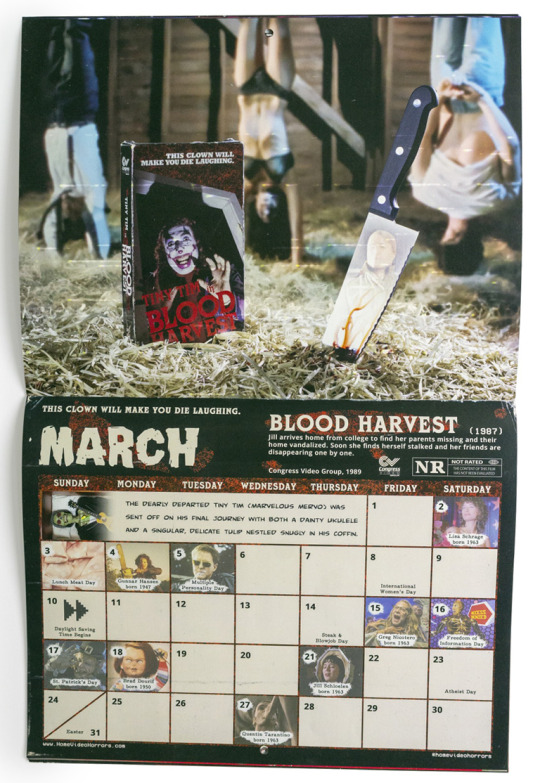

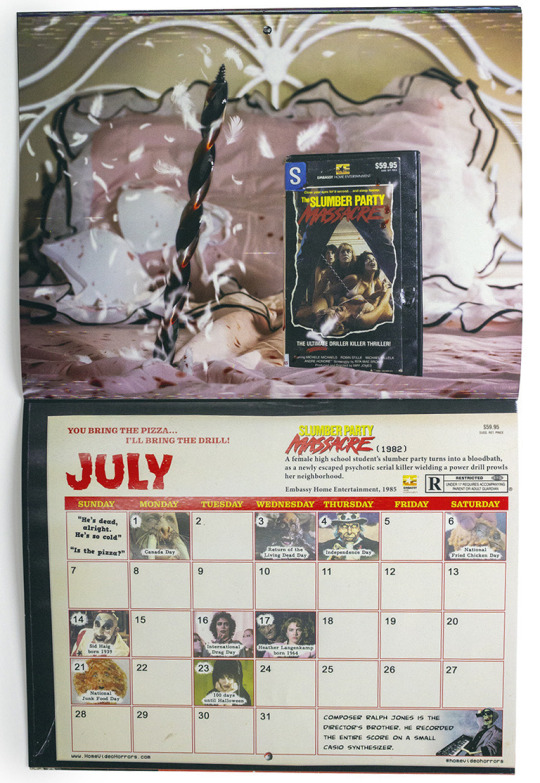

#slumber party massacre#13 ghosts#vhs#horror#80s horror#1980s horror#attack of the killer tomatoes#lunchmeat#art#gift#the slumber party massacre#william castle#roger corman#80s movies#video store
45 notes
·
View notes
Text
FROM THE B-MOVIE BADLANDS...
...images from the lost continent of cult films, b-movies and celluloid dreamscapes


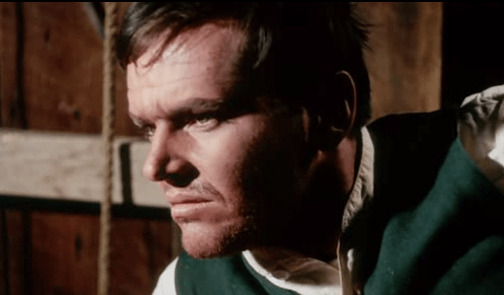

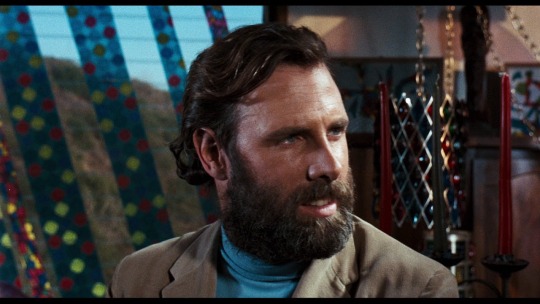

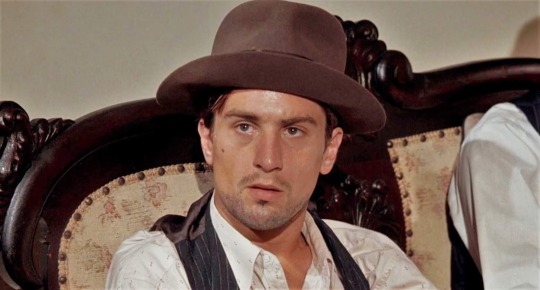
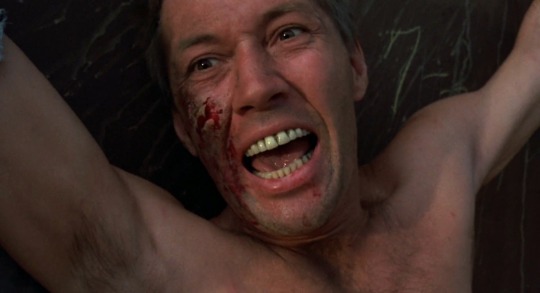


Famous stars in movies directed or produced by Roger Corman
We'll talk about your character's motivation later...just put the damn suit on and you'll have an Academy Award before you know it...
Charles Bronson - Machine Gun Kelly (1958) William Shatner - The Intruder (1962) Jack Nicholson - The Terror - (1963) Peter Fonda - The Wild Angels (1966) Bruce Dern, Dennis Hopper - The Trip (1967) Robert de Niro - Bloody Mama (1970) David Carradine - Boxcar Bertha (1972) Slyvester Stallone - Death Race 2000 (1975) Tommy Lee Jones - Jackson County Jail (1976)
#from the b-movie badlands#roger corman#before they were famous#stars#hollywood#de niro#jack nicholson#stallone#bruce dern#tommy lee jones#denis hopper#peter fonda#david carradine#charles bronson#william shatner
20 notes
·
View notes
Text

Currently Watching
THE WASP WOMAN
Roger Corman, 1959
#Susan Cabot#Anthony Eisley#Barboura Morris#William Roerick#Roger Corman#Fred Katz#horror films#watching#1959
6 notes
·
View notes
Audio
Buzz buzz, here comes THE WASP WOMAN (1959) from Roger Corman himself! The film stars Susan Cabot, Michael Mark, Fred Eisley, Barboura Morris and William Roerick.
We discuss wasp facts, the history of cosmetics, and Susan Cabot's sad biography in this episode, so there's plenty to chew on.
Thanks for your patience in our delays getting this episode ready, I think it was worth the wait!
Context setting 00:00; Synopsis 26:32; Discussion 43:57; Ranking 1:04:30
#podcast#horror#roger corman#the wasp woman#the fly#leo gordon#kinta zertuche#susan cabot#fred eisley#barboura morris#william roerick#michael mark#bruno vesota#harry neumann#carlo lodato#fred katz#filmgroup#allied artists#wasps#royal jelly#cosmetics#the bee girl#insect woman
9 notes
·
View notes
Text
Big Bad Mama
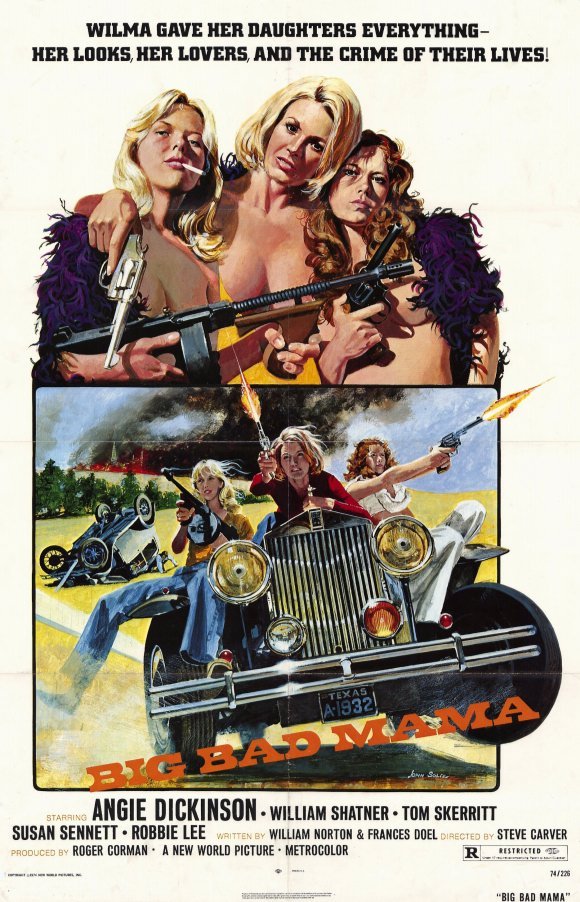
3 notes
·
View notes
Text
On August 16, 2008 Dementia 13 was screened at the American Cinematheque's Festival of Fantasy, Horror and Science Fiction.
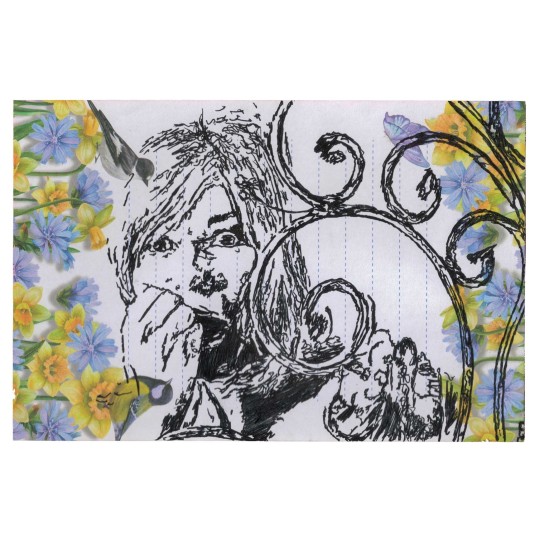
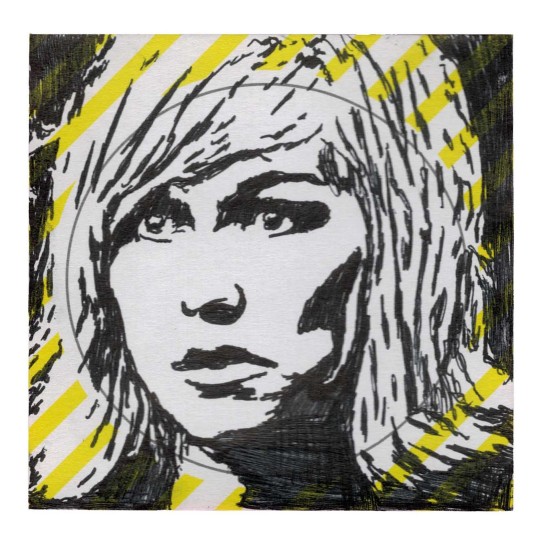

#dementia 13#francis ford coppola#launa anders#william campbell#horror film#horror#horror movies#roger corman#independent film#indie film#gothic horror#horror art#film festival#movie art#art#drawing#movie history#pop art#modern art#pop surrealism#cult movies#portrait
2 notes
·
View notes
Photo



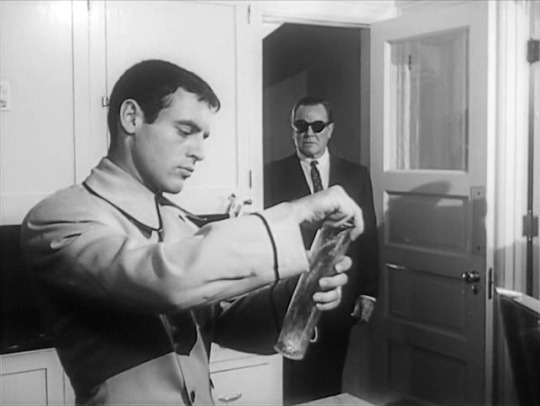
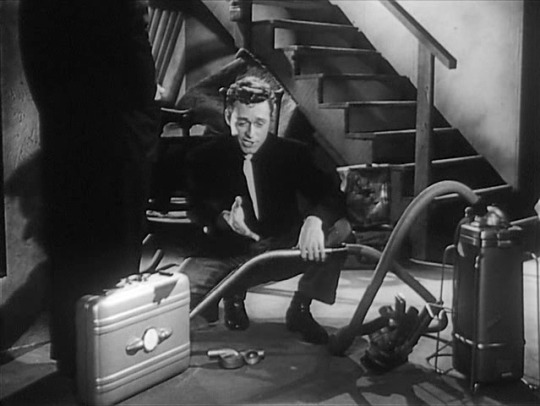
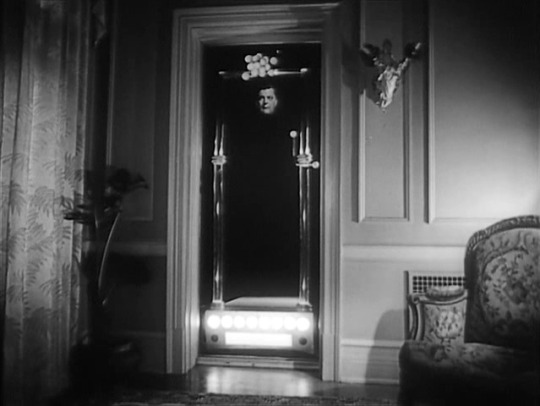
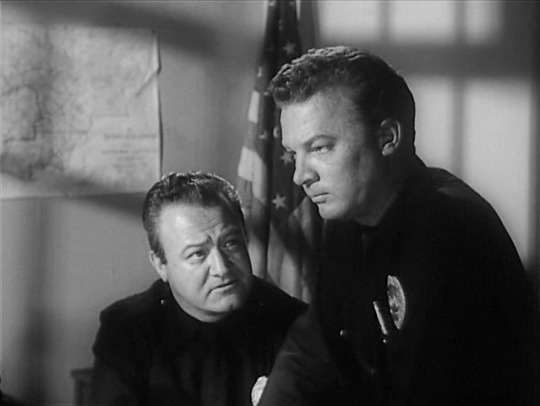

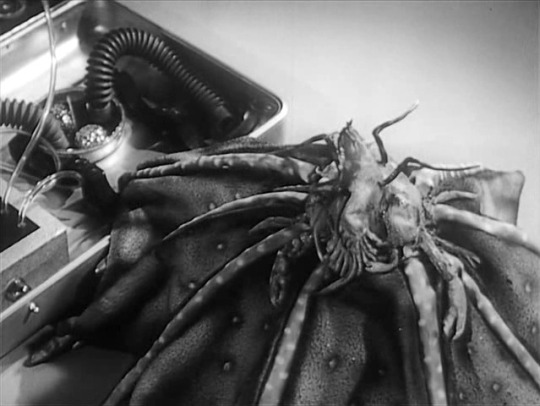

Not of This Earth (1957, Roger Corman)
6/28/22
#Not of This Earth#Roger Corman#Paul Birch#Beverly Garland#Morgan Jones#William Roerick#Jonathan Haze#Dick Miller#50s#horror#science fiction#aliens#vampires#blood#nurses#mind control#blood transfusion#monsters#B movie#L.A.#Southern California#nuclear
3 notes
·
View notes
Text
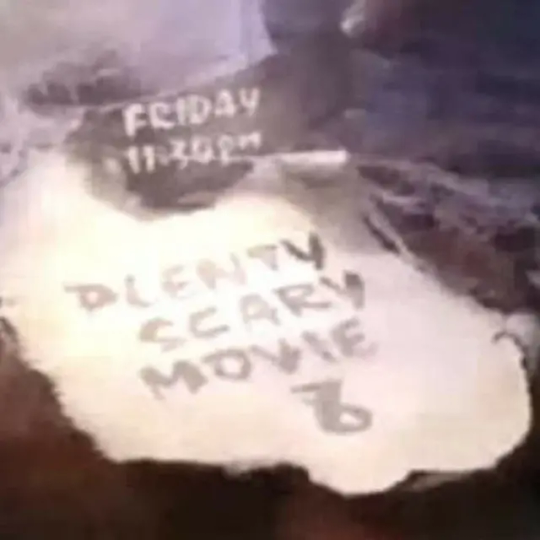
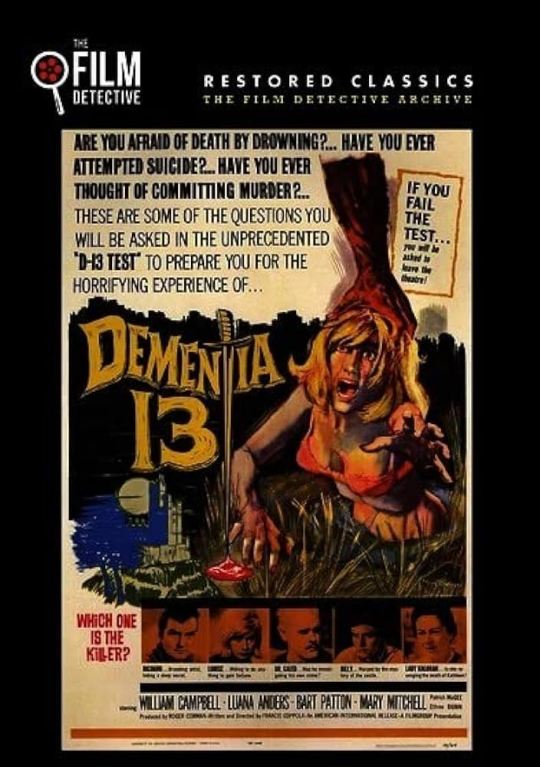
Now showing on DuranDuranTulsa's Plenty Scary Movie...Dementia 13 (1963) on classic DVD 📀! #movie #movies #horror #dementia13 #rogercorman #WilliamCampbell #60s #DVD #durandurantulsa #plentyscarymovie #8sThePlace #ktul #durandurantulsasplentyscarymovie
#movies#movie#horror#dementia 13#roger corman#William Campbell#60s#dvd#duran duran tulsa's plenty scary movie#plenty scary movie#8's the place#ktul
1 note
·
View note
Text
Watching The Intruder
0 notes
Text
The Wasp Woman (Revisited)| Episode 348
New Post has been published on https://esonetwork.com/wasp-woman/
The Wasp Woman (Revisited)| Episode 348
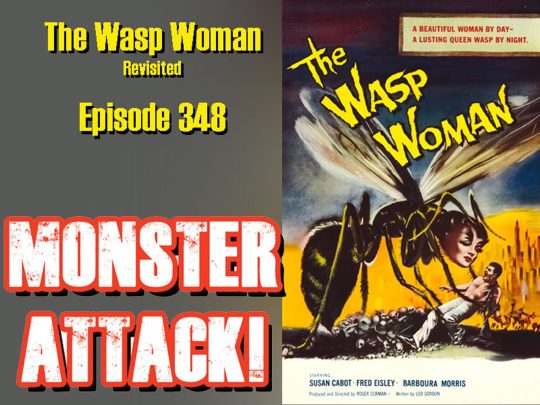
On this Halloween Episode of MONSTER ATTACK!, The Podcast Dedicated To Old Monster Movies, Jim reflects again on a favorite from his early days of Monster Movie viewing, Roger Corman’s “The Wasp Woman.” This 1959 classic stars Susan Cabot, Barboura Morris, Anthony Eisley, Willian Roerick, Michael Mark, Frank Gerstie, Bruno, VeSota and Roy Gordon. The head of a giant cosmetics firm uses a controversial enzyme derived from wasp royal jelly to look younger with tragic results. It’s all ahead on this week’s episode.
#1959 Monster Movie#Anthony Eisley#Barboura Morris#ESO Network#Jim Adams#Michael Mark#Monster Attack!#Old Sci-Fi#Roger Corman#Roy Gordon. Bruno VeSota#Susan Cabot#Wasp Woman#William Roerick
0 notes
Photo

TNT Jackson, The Final Comedown, and Savage! have been released on Blu-ray together via Scream Factory. Limited to 1,500, the triple feature is available for $34.98 exclusively in the Shout Factory store.
TNT Jackson is a 1974 Blaxploitation action film directed by Cirio H. Santiago and written by actor Dick Miller (Gremlins) and Ken Metcalfe. Jeanne Bell, Stan Shaw, Pat Anderson, and Chiquito star. Roger Corman executive produces.
The Final Comedown is a 1972 Blaxploitation drama written and directed by Oscar Williams (Truck Turner), based on Jimmy Garrett's play We Own the Night. Billy Dee Williams and D'Urville Martin star. Roger Corman executive produces.
Savage is a 1973 Blaxploitation action film directed by Cirio H. Santiago and written by Ed Medard. James Iglehart, Lada Edmund Jr., and Carol Speed star. Roger Corman executive produces.
TNT Jackson has been newly scanned in 2K from the interpositive, while The Final Comedown and Savage have been newly scanned in 2K from the original camera negatives. All three films feature 2.0 Mono DTS-HD Master Audio. Special features are listed below.
TNT Jackson special features:
Theatrical trailer
Radio spot
Image gallery
Martial arts expert Diana “T.N.T.” Jackson (Jeannie Bell) is pure dynamite when she takes to the streets of Hong Kong in search of her missing brother and runs afoul of the city's most villainous drug pushers.
The Final Comedown special features:
Radio spot
Image gallery
Johnny Johnson (Billy Dee Williams) is a young man with a promising future. But push him too far, and you've got a revolution on your hands!
Savage special features:
Theatrical trailers
TV spots
Radio spot
Image gallery
James Iglehart stars as a criminal on the run who finds even more trouble when he is caught between two warring factions in a tropical nation's bloody conflict.
#tnt jackson#the final comedown#savage#roger corman#blaxploitation#shout factory#dvd#gift#70s movies#1970s movies#billy dee williams#dick miller#stan shaw#exploitation#70s action movies
13 notes
·
View notes
Text
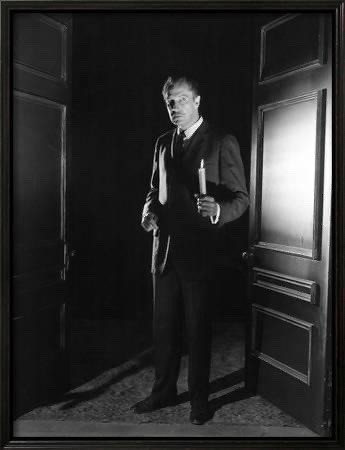
William Castle’s HOUSE IN HAUNTED HILL (1958) & Roger Corman’s THE MASQUE OF THE RED DEATH (1964) feature two of my favorite #VincentPrice performances and both are scheduled on #TCM today as it celebrates the legendary actor on #SummerUnderTheStars
47 notes
·
View notes
Text
Anne Rice, Gay Vampires and the Mistreatment of Claudia in Interview with the Vampire
This was my senior thesis so enjoy.
Intro
Anne Rice’s debut novel Interview with the Vampire (1976) was not well received at the time of its publishing. One reviewer for the New York Times, Leo Braudy, even went so far as to say “there is no story here, only a series of sometimes effective but always essentially static tableaus out of Roger Corman films, and some self‐conscious soliloquizing out of Spiderman comics, all wrapped in a ballooning, pompous language” (Braudy 1976). However, it is now widely considered to be one of the best-selling novels of all time, having been made into a film 12 years after its release and maintaining enough popularity to be turned into a television series in 2022, some 46 years later. While not well received by critics, audiences loved it then and still love it now. Interview is the first novel to allow the vampire to tell their own story; along with the erotic overtones of the novel is what captured the attention of audiences around the world and what kept their attention. Currently, on GoodReads.com the novel has an overall 4.01-star rating with one reviewer writing “Dark and enthralling. This book asks readers to reflect on the constitutions of love and loneliness” while another comments on the writing style, “Anne Rice really makes you feel the depth of emotion that The Vampire goes through.” Both reviews are from 2023. Not only is Interview still relevant because of its content but the impact it’s had on the vampire genre as a whole. It’s opened the door to allowing vampires to not only tell their own stories but to allow them to feel deeply.
Throughout the novel, there is a heavy overtone of erotic desire, often homoerotic desire, mostly between the main character Louis and his vampire father/husband Lestat but also with his later lover Armand. There are also instances of erotic desire with other characters as well; desire is often associated with the act of feeding. Many see the overall desire within the book as being gay, which is one of the reasons its popularity has persisted. While Anne Rice would later write openly gay vampires, this was not the time for that; instead, we are given subtle hints and overtones. After a conversation with Rice, Katherine Ramsland her biographer would write that “The new vampire is brought over into a dramatically changed existence with a gender-free perspective” (Ramsland 148), which confirms the homoerotic overtones within the book. Rice also claims to have attempted to write her vampires as androgynous and without male or female distinctions or as Ramsland said ‘gender-free’. The reality is that Rice has placed Louis and Lestat in traditional gender roles as parents while also feminizing their vampire daughter/lover Claudia. Claudia is also read as feminist through the way she is treated by those around her, in particular their failure to fully acknowledge her as a woman, not a child.
What the people say past and present
Vampires have always been seen as metaphors for various things from the hidden sexuality or desires of the author to a critique of society's values. As William Hughes, a Professor at the University of Macau, put it in his contribution to the book A Companion to American Gothic (2013), “The vampire, an enduring consensus suggests, is the perfect vehicle with which to express the myriad and conflicting cultural implications of human sexual activity and identity” (Hughes 340); vampire lit makes for a good space to explore sexual activity and identity. This idea can be further narrowed but adding gender into the equation. As Melissa Ames says in her chapter of the book Bitten by Twilight (2010), “The fact that the same gender critiques appear in both Dracula and in more contemporary texts suggests that the vampire narrative is a productive space to tease out problems of gender and sexuality, but that it is not a space that necessarily resolves such issues since they recycle decade after decade and text after text in similar fictional constructs”(Ames 44-45); seeing gender critiques within vampire literature has always been common and will continue to be. This idea was echoed in 2016 in the book Women and the Gothic, specifically by contributor Gina Wisker who points out that “female vampires destabilise such comfortable, culturally inflected investments and complacencies and reveal them as aspects of constructed gender identity resulting from social and cultural hierarchies” (Wisker 150), taking the idea of vampire literature critiquing gender a step further by focusing on the role of the female vampire.
Interview with the Vampire has been no exception to analysis or critiques of the portrayal of gender and sexuality within vampire literature. Many cite how Rice shows gender roles in the relationship between Louis and Lestat but most importantly they turn to Claudia and her mistreatment. Many see the way she is treated by those around her, including her vampire fathers, as placing her in a traditional female gender role, often through their lack of acknowledging that she is a woman trapped in a child’s body. Nina Auerbach notes in her book Our Vampires, Ourselves (1996) that Rice’s vampires are compulsive storytellers but Claudia never gets to tell her own story; only men tell her story (Auerbach 154-55). This is a starting point for the way many read Claudia as being placed in a gender role. Auerbach also points out how “Claudia is an adult male construction, a stunted woman who has no identity apart from the obsessions of the fatherly lovers who made her” (Auerbach 158), something that in 2013 Hughes similarly pointed out stating that “Louis’s narration, and his coda,[he] silently deflects the agency from her to him.” (Hughes 345). Claudia is placed in a gender role has persisted through time. The relationship between Louis and Lestat is no exception to a critique or analysis of gender within the novel. Most notably their gender roles are seen in the way they parent Claudia, but these roles can also be seen within their relationship and the way Rice has characterised them. Ken Gelder points out in his book Reading the Vampire (1994), stating that “Rice emphasises the differences between these two male vampires, with Louis as delicate and sensitive (i.e. feminised) and Lestat as aggressive and impetuous (i.e. masculinised)” (Gelder 112). Rice shows gender roles throughout the relationship between Louis and Lestat often feminising one and masculinising the other.
Pre-child Love
In order to establish a foundation of gender roles within the novel you must first look at the relationship between Louis and Lestat before they created/birthed Claudia. In particular, you must look at how their relationship can be seen as queer or as having homoerotic overtones. Iulia Pintilie¹ points out in her article for the Journal of Romanian Literary Studies that “a passionate tension between the male vampires is clearly suggested in the writing” (Pintilie 642), something that can be seen throughout the novel but most notably early in their relationship. When we first meet Lestat in the novel it is at Louis’s bedside where he thinks him a possible doctor or angel. We, like Louis, quickly learn that Lestat is not normal or human, he is some kind of creature. One that wants Louis to be like him so that he may take control of Louis's plantation (16).
Louis gives their relationship a homoerotic overtone when he, in response to being asked to describe his turning, tells the reporter “I can’t tell you exactly, any more than I could tell you exactly what is the experience of sex if you have never had it” (15); comparing the loss of virginity to his turning implying a sexual overtone. Their relationship and the turning itself are given further erotic overtones when Louis says “I remember that the movement of his lips raised the hair all over my body, sent a shock of sensation through my body that was not unlike the pleasure of passion” (19); again equating sex and being turned. After his turning Louis spends time staring at things like the buttons on Lestats coat or the trees and cobblestones, here Lestat breaks the erotic tone created in the turning scene. Lestats sends Louis to relieve his body of waste and upon Louis's return, he finds him already working on the plantation papers–cementing the idea that Lestat only wants him for his money. This is an aspect of their relationship that Pintilie describes as resembling “an eighteen-century aristocratic union in which the two husbands increase their family fortunes through their marriage” (Pintilie 647), though at this moment it's not yet a marriage.
In the five years that make up their relationship–some sixty pages of the novel–before Claudia’s birth/turning, Louis struggles to come to terms with what Lestat has made him. Louis often refers to how violent and unfeeling Lesast could be, noting early in their relationship how Lestat could go from one emotion to the opposite. Louis notes in Lestat's treatment of his father that “he’d been gracious to the old man, almost to the point of sickening, but now he became a bully” (23); Lestat goes quickly from one emotion to another. Louis also notes how easily Lestat is set off when he says that in response to Louis wishing to sleep alone, “he became furious” (34) before Lestat sets off in a small tirade over why they should be bunking together. Lestat’s repeated instances of enjoying violence or being unfeeling are what give him his masculised gender role whereas Louis is often repulsed by violence and feels deeply thus femisising him. Louis even notes Lestats lack of emotions when after describing his own deep feelings about being a vampire he tells the reporter “Lestat felt the opposite. Or he felt nothing” (31). Driving home the idea that Lestat is different from Louis.
In the five years prior to Claudia joining them, Louis experiences many things with Lestat from his own turning to learning to kill but never embracing it to his home being burned to the ground. Throughout it all Lestat remains a violent, emotionally unpredictable manipulator in Louis’s life, not unlike one would see in an abusive intimate partner. Louis even tells the reporter that “I had to stay with him” (35), going on to explain that Lestat was keeping information from him about his vampire existence as a way to force him into staying. Something Lestat continues to do even after turning Claudia. Eventually, towards the end of their five years, Louis finally decides he must leave Lestat when they flee to New Orleans city proper after an incident at the Freniere plantation. Louis tells the reporter “I have to leave him or die” (71), this decision comes only hours before he meets Claudia for the first time and days before they would turn her.
Post-child Love
When Rice chooses to have Louis and Lestat become fathers, she also makes them husbands cementing their “marriage” when they turn Claudia. While Lestat is the one to complete Claudia’s turning by feeding her his blood, Louis participates by having been the one to drain her thus making them both her vampire fathers. Louis is at first a reluctant ‘mother.’ He did not want to turn Claudia but Lestat forces him into it, using her as a way to trap Louis into staying with him. Candace Benefiel explains this scene best telling readers in her article for the Journal of Popular Culture² that “The whole scene reads like a couple having a child in an attempt to make a failing relationship once more viable” (Benefiel 267). In this case, it’s Lestat attempting to keep the relationship viable, he explains to Claudia after her turning that “ ‘Louis was going to leave us,’ (...) ‘He was going to go away. But now he’s not. Because he wants to stay and take care of you and make you happy.’ (...) ‘You’re not going, are you, Louis?’ ” (94). At this moment he is also revealing the truth of her turning to Louis as well. This plan of Lestat’s works, Louis tells the reporter that “Afraid of fleeing alone, I would not conceive of risking it with Claudia. She was a child. She needed care” (97), cementing his need to stay with the ‘family.’ As if Louis was a mother staying with an abuser to protect a child.
In making them parents Rice masculinizes Lestat–he is only ever the ‘father’ and feminizes Louis–he is called ‘father’ but acts as a ‘mother.’ Lestat takes on a more traditional masculine father role when Louis tells us that he “was loving to her, proud of her beauty, anxious to teach her that we must kill to live and that we ourselves could not die” (97). He is excited to teach her to kill, to be aggressive–traits that can be seen as more masculine. Louis takes on a more feminine or motherly role in that he is the one to educate her on things like “mortal creations”, poetry, music, and books (100), teaching her softer life skills that are seen as more feminine. While Louis’s dedication and attachment to Claudia can be viewed as ‘motherly instinct,’ you could also argue that it is simply parental the way he wants to protect her and keep her close throughout the novel, though it’s the juxtaposition of Lestat's masculine traits that give Louis’s a more ‘motherly’ feel. Louis even tells the reporter “At first, I thought only of protecting her from Lestat. I gathered her into my coffin every morning and would not let her out of my sight with him if possible. This was what Lestat wanted, and he gave little suggestions that he might do her harm” (97), implying Louis is a ‘mother’ protecting their child from an abusive ‘father’–Lestat. The three spend some sixty-five years living together as a family before tensions arise. Before their family comes apart, Louis continues to try to keep himself isolated from Lestat, now having Claudia join him when she is not off-killing with Lestat. Louis explains to the reporter that “there was no quarreling. We kept to ourselves (...) Claudia and I pursued our natural tastes and Lestat went about his lavish acquisitions” (104).
When tensions between Claudia and Lestat begin to rise so do tensions with Louis and Lestat. Lestat is frustrated with Claudia ignoring him or as Louis tells the reporter “she grew cold to Lestat” (105). This leads to Lestat lashing out at Louis after Louis attempts to stop him from lashing out at Claudia and later to another argument. An argument where Louis cements seeing himself as Claudia’s mother telling the reporter “ ‘What’s the matter with her!’ he [Lestat] flared at me, as though I’d given birth to her and must know” (105). It’s in the issues or tensions that we can once again see the relationship between Louis and Lestat as abusive. Particularly with Louis as the victim and Lestat as the abuser; this is one of the main ways that Rice has applied gender roles to their relationship. She makes the relationship reminiscent of a heterosexual one by making Louis the ‘mother’ figure to Claudia. This is shown subtly when after Claudia tells Louis they must leave Lestat they begin to plan their escape (118-119). Louis explains to the reporter that before now he’d “grown accustomed to him, as if he were a condition of life itself” (118). Louis had grown complacent in the relationship content to keep himself and Claudia from Lestat but never leaving. Louis goes on to explain that while he planned to buy their freedom (119) he “did not believe it would be possible to escape him [Lestat]” (119); reminiscent of the emotions a victim planning their own escape may feel.
Louis’s ‘motherly’ instinct is seen again towards the end of the novel when the Theater Des Vampires come to collect Louis, Claudia, and Madeliene for trial. Louis tells the reporter that “the instinct to protect Madeleine and Claudia was overpowering” (294), he also attempts to bargain with Lestat for her life saying to him “ ‘You let her go, you free her…and I will…I’ll return to you’ ”(296). In both of these cases, Louis is attempting to protect Claudia the way a mother or parent would. In the second instance, Louis even attempts to stand up to Lestat as a means to protect Claudia or at the very least justify her actions against him by telling the others “how you treated us, that we didn’t know the laws, that she didn’t know of other vampires’ (296); he is attempting to get Lestat to own to his part in Claudia’s attempting to kill him, to admit to abusing his power over them.
Claudia as treated by her ‘fathers’
It’s not until Claudia has lived with Louis and Lestat for over sixty-five years that Loius begins to acknowledge that she is in fact not a child but a woman trapped in the body of a child remarking to Lestat that “She’s not a child any longer,[...] I don’t know what it is she’s a woman” (105). Louis only begins to realize this after she has been ignoring Lestat, resenting him for being her “father.” Both men realize that she is grown again only after she begins to question her origins and subsequently wants to leave Lestat to free them from him saying to Louis “And we’ve been his puppets, you and I; [...]. Now’s time to end it, Louis. Now’s time to leave him”(118). Claudia tells Louis that she will kill Lestat to free them of him. Not because she believes it’s the only way to free them but because she wants to, she repeatedly tells Louis “ ‘I can kill him. (...) I want to kill him. I will enjoy it!’ ” and “ ‘I want him dead and will have him dead. I shall enjoy it’ ” (124). They proceed to argue over if Lestat even can be killed and after she comments she may inherit Lestats power after killing him, Louis becomes angry. He tells the reporter “ ‘I was enraged now. I rose suddenly and turned away from her’ ” (124) but he quickly reverts back to seeing her as childlike in her innocence, seeing her wanting to be free of Lestat like a child throwing a tantrum and making idle threats. It's not until she attempts to kill Lestat that he again sees her as a woman though it is at the expense of also being repulsed by her. After Claudia kills Lestat, Louis tells the reporter “I turned away from her. I was unable to look at her (...) I would not look at her (...) I couldn’t stand the sight of her” (139-140). Though once Claudia shows distress at Louis's reaction he reverts back to treating her like a child rocking her as she cries in his arms.
Lestat never sees Claudia as a woman or an adult; to him, she is simply a means to keep Louis with him, and as a toy or as Lestat calls her a “doll” for him and Louis to play with. Lorna Jowett points this out in her article “ ‘Mute and Beautiful’: The Representation of the female vampire in Anne Rice’s Interview with the Vampire”, telling readers that “In neither case is Claudia of importance for herself; rather she is simply an object to be used in the struggle/relationship between two male vampires” (Jowett 56). Lestat eventually comes to see Claudia as a child, his and Louis, but by the end of the novel he sees her as the enemy and never does he view her as a woman.
Throughout the novel both Louis and Lesta refer to Claudia as a doll; Louis often refers to her by material things as well. After first presenting the idea of turning Claudia Lestat even tells Louis to “think of all the pretty dresses we could buy for her” (75). Louis even goes as far as explaining that after her turning Lestat hired dress and shoemakers to outfit Claudia; that he “played with her as if she were a magnificent doll, and I played with her as if she were a magnificent doll (99). Both men also treat her like a doll up until she begins to ask questions often dressing her and doing her hair. Katherine Ramsland notes in the book The Vampire Companion⁴ that “Lestat and Louis treat Claudia like a doll, despite the fact that her mind matures into that of an intelligent, assertive, and seductive woman” (Ramsland 69); even after her maturing they continue to treat her as a doll. Louis further feminizes Claudia by placing emphasis on more material items like her clothes and hair. Gabriella Jonsson says this well when in her article for the Journal of the Fantastic in the Arts³ she claims “Claudia’s “feminity” is expressed only through clothes and hair, making her gender identity fluid, easily disruptible” (42). Louis often refers to Claudia's dresses, hair ribbons, or even her blonde hair as a way to not only give her physical description but to emphasize her femininity and adolescence. As we know from Louis she is often dressed in colorful puffed sleeves, hair ribbons, and slippers like you might see a doll wearing. Even in her death, Claudia is defined by material things, Louis knows she is dead after seeing not only Lestat holding her yellow dress and her golden hair.
Claudia as perceived by others
Other vampires aside from Louis and Lestat tend to overlook Claudia, something Louis notes when telling the story of his and Caludia’s first night with the Theater Vampires, stating to the interviewer “Knowing what I also knew and what they [the female vampires] seemed unable to grasp: that a woman’s mind as sharp and distinct as their own lived within that small body” (243).The other female vampires Estelle and Celeste– the only two to get named– take an interest in Claudia’s beauty, having her flaunt her looks the first night they meet. Though they quickly reveal their true feelings towards Claudia, Estelle tells her in front of the other vampires that “black was the color for a vampire’s clothes, that Claudia’s lovely pastel dress was beautiful but tasteless” (244) causing everyone to laugh at her. Louis also notes that Celeste appears to not like Claudia early on when in response to a question she asks he claims “her [Celeste’s] eyes reflected a certain contained hostility” (244) only further cementing the notion that these two vampires do not like Claudia. The other vampires like Santiago see her as neither child nor vampire. To them, she is simply a toy, something they can play with to soothe their boredom and allows them to indulge in their cruel nature. They do not see her as an equal which could be because she appears as a child but they feel the same lack of intellectual interest in Louis, who is only saved from being their target by Armand's interest in him. Armand overlooks her simply because he has no interest; he is more concerned with getting Louis to leave Paris with him, to become his companion. Ultimately Armand has no personal feelings about Claudia only seeing her as an obstacle to getting Louis, something Claudia is aware of. She tells Louis after their first meeting with him, “Do you know what he said….that I should die'' (249), explaining to Louis after that “He would have you, and he would not have me stand in the way” (250). Armand notes to Louis that it was cruel of them to turn Claudia seeing as she will never be a full woman, that is a woman who has reached physical maturity, telling Louis that if he were in a position that required him to turn his human child-blood-slave he would not, “because he is too young, his limbs not strong enough, his mortal cup barely tasted”(252). It would be a disservice to turn him, a “flaw” as he calls it. He notes the problem with turning a child, the disservice that her creators did in making her, saying to Louis “And then there is this mysterious child: a child who can never grow, never be self-sufficient” (252), telling him that most other vampires wouldn’t turn anyone who could not be self-sufficient. Having this vampire child with him is part of the reason the other vampires have taken an interest in them, it's quite unusual. Also, Louis and Claudia are not unfeeling vampires (he still holds onto his humanity), making them stand out in a way that makes them easy targets for a group like the Theatre Vampires.
Alternatively, Madeleine only sees Claudia one way, as an immortal child. As we know Madeleine is grieving the loss of her own daughter so that's what she sees in Claudia. When Louis is asking Madeliene if she will care for Claudia he also asks “Is that what you believe her to be, a doll?” (267), though she responds with “ ‘A child who can’t die! That’s what she is,’ ” (267). This interaction tells us that while Madeliene may not see Claudia in the same doll-like way Louis and Lestat once do she still does not recognize her for what she is–a grown woman trapped in the body of a child. After her turning Madeliene becomes obsessed with Claudia, making her clothes and furniture that are proportionate to her size. Beyond Madeliene's grief-induced obsession with Claudia being an immortal child that she must provide for, we know nothing else of their relationship or Madeliene’s perception of her.
Claudia on her situation
Claudia is not ignorant of her position within her family and in the world, understanding that she will always appear as a child so no one will treat her as a woman, a point of great frustration and struggle for her. Before her demise in the novel, she has come to terms with her situation and has chosen a new caregiver for herself so that Louis may be free. Though she must beg him to do so. Louis only concedes after speaking with Madeliene–an adult–emphasizing that Louis does not see Claudia as an equal (adult). It's in the turning of Madeliene that we can see Claudia as other or less womanly in the eyes of men; it brings Louis great pain to turn Madeline causing him to see Claudia as absurd or monstrous. She must ask Louis to do this because while she is a vampire she can never turn another, that is create children, due to her size. Lestat points this out, stating “You don’t have the power. Either of you” (Rice 132) after Claudia makes a comment about the three of them filling the world with vampires. She must beg Louis to do it for her, once again emphasizing her child and womanly-like helplessness, telling Louis in response to his hesitance at turning Madeliene “ ‘Because I cannot do it.’ Her voice was painfully calm, all the emotion under the hard, measured tone. “I haven’t the size, I haven’t the strength! You saw to that when you made me! Do it!’ ” (260). It's in this instance, of Claudia begging Louis to turn Madeliene, that we can see her awareness and frustration with her situation. She tells Louis that had he waited “six more mortal years, seven, eight…I might have had that shape! … I might have known what it was to walk at your side.” (261-62). This is also where we can see her acceptance of her situation as she explains to Louis that he must “Give her [Madeliene] to me so she can care for me, complete the guise I must have to live! And he can have you then! I am fighting for my life!” (265). She points out how she will not survive this world alone; she must be forever tied to another. We can also see her anger in having been immortally bound to a child's body when she calls Louis a “monster” and in her killing of Lestat after discovering he was the one to turn her. This anger can be seen in how his initial “murder” is not one of passion but is intricately planned with Claudia poisoning him to make him an easier target though his later “murder” is one of self-defense seeing as Claudia is attempting to protect herself and Louis from Lestat’s attack that final night in New Orleans.
The other women
Women are not often seen–that is given speaking roles or even names– in the novel. There are a few like Babbette Freniere–a human that Loius and Lestat knew before Claudia’s creation, Celeste & Estelle–the only other female vampires noted in the novel, Madeliene the doll maker turned vampire, and of course, our main female figure Claudia the vampire child created in an attempt to save her ‘father’ relationship.
Babette takes up little space in the novel only being initially significant because of Lestat’s interest in killing her brother and Louis's concern for their family plantation. Before Louis and Lestat must flee to the Feniere plantation for aid Babette is only mentioned when Louis advises her to keep the plantation after her brother's death. Louis shows his respect for Babette not only in advising her to keep the plantation but before then when he describes her to the reporter as “not only as smart as her brother, but far wiser” (43). We see the downfall of Babette when after Louis and Lestat go to her for aid, she attacks Louis attempting to kill him because she believes him to be “from the devil” (65). The last time Babette is mentioned is when Lestat mentions that now some sixty-five years later the Freniere plantation is meant to be haunted. This causes Louis to remember Babette, he tells the reporter that she “died young, insane, (...) insisting she had seen the devil” (130); an insanity caused by discovering that Louis is not human. Babette is also used in the novel as a tool to further Louis’s self-loathing. She acts as a symbol of him holding onto his humanity and what was left of his human life. She even validates his thoughts that he is from the devil when she tells him such and calls him a “monster.” Overall we only know Babette as the human Louis saw his humanity in, a human who descends into madness.
In contrast, there are the two notable female vampires Celeste & Estelle who are often characterized as what you could call ‘mean girls.’ They are initially introduced as part of the Theater des Vampires, women who at first seem to take to Claudia fondling her and having her turn about for them (243). Louis is quick to note that Celeste's eyes “reflected a certain contained hostility” (244) and that Estelle is condescending to Claudia when she points out that “black was the color for the vampire’s clothes, that Claudia’s lovely pastel dress was beautiful but tasteless” (244) causing everyone to laugh at her. We also know from Armand that Celeste is jealous of Claudia, he notes “She is jealous of the child’s beauty” (254); another reason they can be characterized as ‘mean girls.’ Overall they can both be viewed as catty ‘mean girls’ who are jealous of Claudia and only wish to play games with both her and Louis. In the end, they are killed, in fact, no female vampire survives the novel.
Madeleine is the last woman in the novel to be named. Not only does Madeliene die by the end she is only in forty-five pages of it. While she is used only as someone to replace Louis as Claudia’s caretaker we do get to see the beginnings of her descent into madness. When we first meet Madeleine it is after Claudia has brought her home to have Louis turn her; her only significance is in replacing Louis. We quickly learn though that while Claudia intends to have her as a guardian, Madeleine only wishes to relieve the guilt of having lost her own daughter by replacing her with an immortal one; Madeleine notes this to Louis “A child who can’t die! That’s what she is” (267). Her madness starts quickly after her turning when Louis notes that she burned her dead child's belongings and that he “had to lead her away from men and women she could no longer drain dry” (273). He even outright calls her mad when talking about those few nights before her death. Louis also notes that Madeleine had become “accustomed to dreaming; and that she would not cry out for reality, rather would fee reality to her dreams, a demon elf feeding her spinning wheel with the reeds of the world so she might make her own weblike universe” (273); he gives his explanation for what was happening to Madeleine. In the end, Madeliene is only remembered by Louis not only for her madness but for her cries as the Theater Vampires took them away.
Conclusion
The claim that Anne Rice has made of writing vampires as being without male or female distinctions or as being “gender-free” (Ramsland 148) is disproved through a close reading of Interview with the Vampire. The main characters within the novel Louis, Lestat, and Claudia present to readers the gender roles which Rice claims to have not made. Through the relationship that Louis and Lestat share–both pre and post-Claudia–you can see how she has made Lestat masculine in a way that gives Louis a femininity. Through Claudia and her mistreatment Rice once again shows that she has given her vampires' gender distinctions. One can also see Rice’s gender distinctions in her treatment of women in the novel as a whole but it is most notable in Claudia. Claudia the immortal woman-child whose story is only told by a male vampire in relation to a male vampire.
End notes
¹ “GENDER CONVENTIONS: HOMOSEXUAL EROTICISM AND FAMILY LIAISONS IN ANNE RICE AND NEIL JORDAN’S INTERVIEW WITH THE VAMPIRE.”
² “Blood Relations: The Gothic Perversion of the Nuclear Family in Anne Rice's Interview with the Vampire.”
³ “The Second Vampire: ‘Filles Fatales’ in J. Sheridan Le Fanu’s ‘Carmilla’ and Anne Rice’s ‘Interview with the Vampire.’”
⁴ The Vampire Companion: The Official Guide to Anne Rice's "The Vampire Chronicles"
Works Cited
Auerbach, Nina. Our Vampires, Ourselves. University of Chicago Press, 1996.
Benefiel, Candace R. “Blood Relations: The Gothic Perversion of the Nuclear Family in Anne Rice's Interview with the Vampire.” The Journal of Popular Culture, vol. 38, no. 2, 2004, pp. 261–273.
Braudy, Leo. “Queer Monsters.” The New York Times, 2 May 1976. NYTimes.com, https://www.nytimes.com/1976/05/02/archives/queer-monsters-interview-with-the-vampire-vampire.html.
Click, Melissa A., and Melissa Ames. “Twilight Follows Tradition: Analyzing ‘Biting’ Critiques of Vampire Narratives for Their Portrayals of Gender and Sexuality.” Bitten by Twilight Youth Culture, Media, & the Vampire Franchise, Lang, New York, NY, 2010, pp. 37–53.
Gelder, Kenneth. “Vampires in the (Old) New World: Anne Rice's Vampire Chronicles.” Reading the Vampire, Routledge, London, 1994, pp. 108–123.
Interview with the Vampire (The Vampire Chronicles, #1). https://www.goodreads.com/book/show/43763.Interview_with_the_Vampire. Accessed 3 Apr. 2023.
Jönsson, Gabriella. “The Second Vampire: ‘Filles Fatales’ in J. Sheridan Le Fanu’s ‘Carmilla’ and Anne Rice’s ‘Interview with the Vampire.’” Journal of the Fantastic in the Arts, vol. 17, no. 1 (65), 2006, pp. 33–48.
Jowett, Lorna. "Mute and Beautiful": The Representation of the Female in Anne Rice's Interview with the Vampire." Femspec, vol. 4, no. 1, 2002, pp. 59
Pintilie, Iulia-Mădălina. “GENDER CONVENTIONS: HOMOSEXUAL EROTICISM AND FAMILY LIAISONS IN ANNE RICE AND NEIL JORDAN’S INTERVIEW WITH THE VAMPIRE.” Journal of Romanian Literary Studies, no. 07, 2015, pp. 642–53.
Ramsland, Katherine. Prism of the Night: A Biography of Anne Rice. Penguin, 1994.
Ramsland, Katherine. The Vampire Companion: The Official Guide to Anne Rice's "The Vampire Chronicles". Ballantine Books, 1995.
Rice, Anne. Interview with the Vampire. Ballantine Books, 1976.
Wisker, Gina. “Female Vampirism.” Women and the Gothic, edited by Avril Horner and Sue Zlosnik, Edinburgh University Press, 2016, pp. 150–66. JSTOR, https://www.jstor.org/stable/10.3366/j.ctt1bgzdfx.14.
A Companion to American Gothic, edited by Charles L. Crow, John Wiley & Sons, Incorporated, 2013. ProQuest Ebook Central, https://ebookcentral.proquest.com/lib/stedwards/detail.action?docID=1388810
#interview with the vampire#vampires#anne rice#the vampire chronicles#louis de pointe du lac#lestat de lioncourt#claudia de pointe du lac#vampire history#gay#feminism#louis and lestat#gay dads#woman-child#claudia deserved better#louis and lestat totally wanted to fuck#armand#madeline also deserved better#anne rice isn't the best#senior thesis#just graduated#I spent four months on this so please give me feedback#Really someone read this#I also have a link to a portfolio site if anyone wants it#the site has other writings on it my favorite are the short stories
35 notes
·
View notes
Text
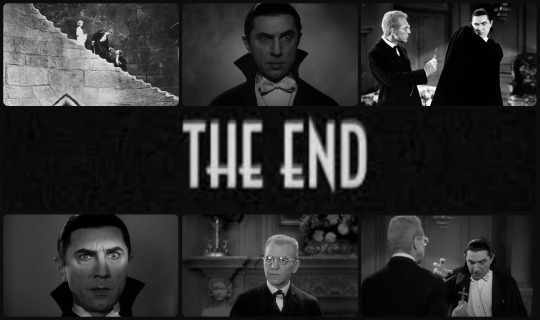
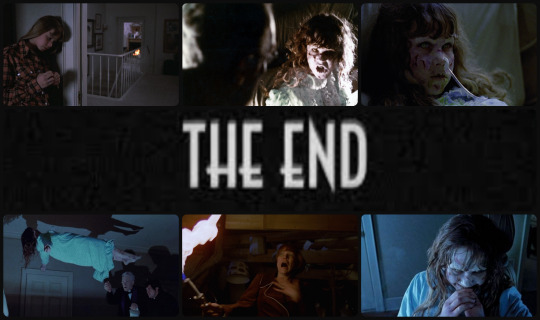
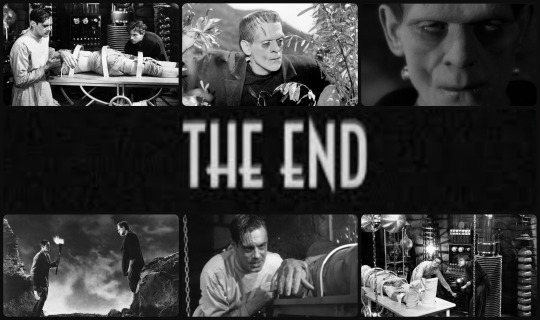


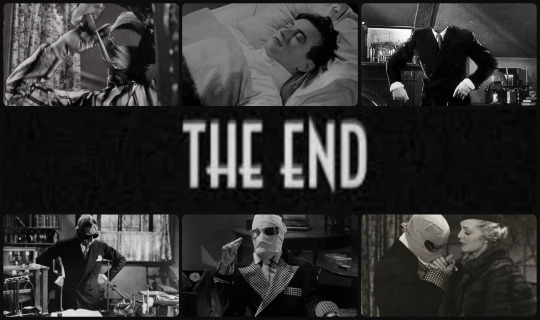



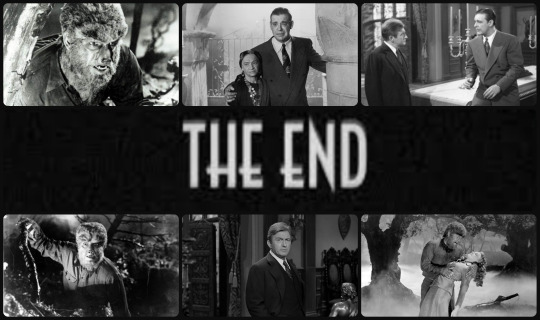
🎃 TJ MIKELOGAN'S HALLOWEEN 2023 EVENT 🎃
DAY 14: Classic films
ICONIC CLASSIC FILMS
Dracula (1931) dir. Tod Browning
The Exorcist (1973) dir. William Friedkin
Frankenstein (1931) dir. James Whale
The Bride of Frankenstein (1935) dir. James Whale
Halloween (1978) dir. John Carpenter
The Invisible Man (1933) dir. James Whale
The Masque of the Red Death (1964) dir. Roger Corman
Psycho (1960) dir. Alfred Hitchcock
The Wizard of Oz (1939) dir. Victor Fleming
The Wolf Man (1941) dir. George Waggner
#USERTJ#horror#horroredit#fantasy#fantasyedit#halloweenedit#dracula#the exorcist#frankenstein#the bride of frankenstein#halloween#halloween 1978#the invisible man#the invisible man 1933#the masque of the red death#psycho#the wizard of oz#the wolf man#universal monsters#universalmonstersedit#2023 halloween season
15 notes
·
View notes
Text
HELLOWEEN #16: TRIXOIN
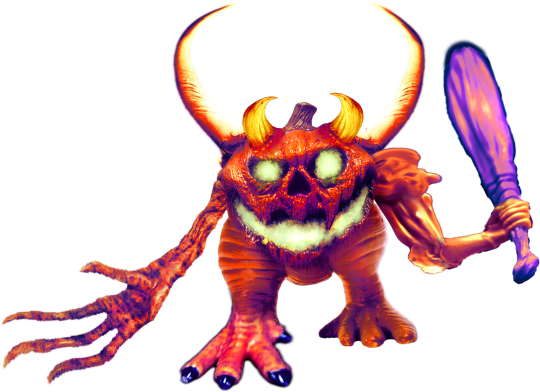
-TRIXOIN is a Jester of Hell with 444 novel mechanisms and 42 warrants for disturbing the peace. She grants advice on mischief and mechanisms thereof of all types, may garb a man in clothes of extravagant and impossible tailorings and produce illusions of visceral horror, and may produce candies of all sorts for the conjuror including that with poison, bodily transformation unto fell or fair shapes, or of granting strange vigors.
She may also animate the dead, though as puppets not resembling the appearance of life. She appears as an imp with the body of a pumpkin holding a great cudgel. Sweetened foodstuffs must be used within her summoning, or else she will cause minor injury to the surrounding area.-
I feel as if I have neglected to point out, the statistical values given in the Last Testament have a tendency to be... very out of date. Her "novel mechanisms" have to be at least double that by now. This is unhelped by the fact that, as one might ascertain, demons have an obnoxious tendency to lie.
She is one of those rare entrepreneurs in hell, a freelance torturer. By which I mean she runs illegal smallholder "houses of horrors" that do not abide by the licensing laws of Hell, and which require constantly moving to avoid destruction. While freedom is the word upon Hell's lips, the chains of their own laws are upon their hearts, and nobody in the upper ranks likes a rebellious upstart.
She is giddy to speak of the terror and ghoulishness of her attractions, but upon my own observation, what fascinated me is the differences in evocation. The horrors of other; more professional tortures I have observed is in their evocation of mundane cruelties.
As the testaments of others have related to me, and my own observation has conveyed, the science of Hell has shown that the cruelty of Earth and its kin but taken to a higher level and no possibility of respite or catharsis is the greatest at inducing pain.
And yet, when I see Trixion's horrors, while... gruesome in ways I likely cannot describe here, they are produced of nothing but catharsis, paced with deeply deliberate moments of respite, though she seems only partially aware of this when I ask. This grants further evidence to my suspicions about the true nature of demonic feeding and energetics, suspicions which Giobella also obliquely hinted at, but that is neither here nor there,
What is also fascinating is the fact that, from all observation and casual testimony alike, she is quite powerful, of the echelon where she could perhaps be nominated for official torturer. But, when I asked her why she had not; perhaps; attempted to "go legit," she responded "...Eh, it'd be less fun that way," citing the intolerance of her methods in the official eschelons.
Perhaps it is her experience as an imp that gives her this rebellious streak, even at the apex of power, but I believe it is something more. In this case, she reminds me perhaps of the Roger Corman or William Castle of your Earth. Does your realm still run those spookshows? I really need to attend one of those again...
-Xavier X. Xolomon , Monsterologist and Understudy to The Librarian Of Babel
Another one of the earliest demon designs for this project, I actually made her a lady at the last second, because I mean, why not?!
And yes, I imagine her with an Arleen Sorkin-type voice, R.I.P.
As per usual the whole descriptions, designs, ectcetera from this project are free to use as you see fit under a CC-BY 4.0 license so long as I; Thomas F. Johnson, am credited as their creator!
#my art#my writing#helloween#character design#creature design#demon#demons#pumpkin#jack o lantern#spooky
6 notes
·
View notes